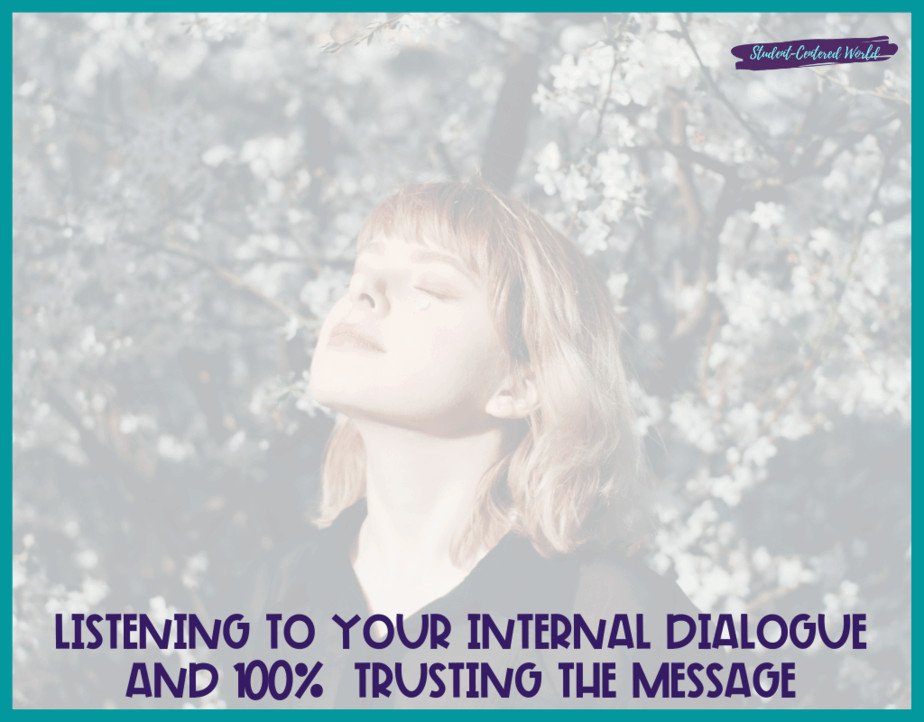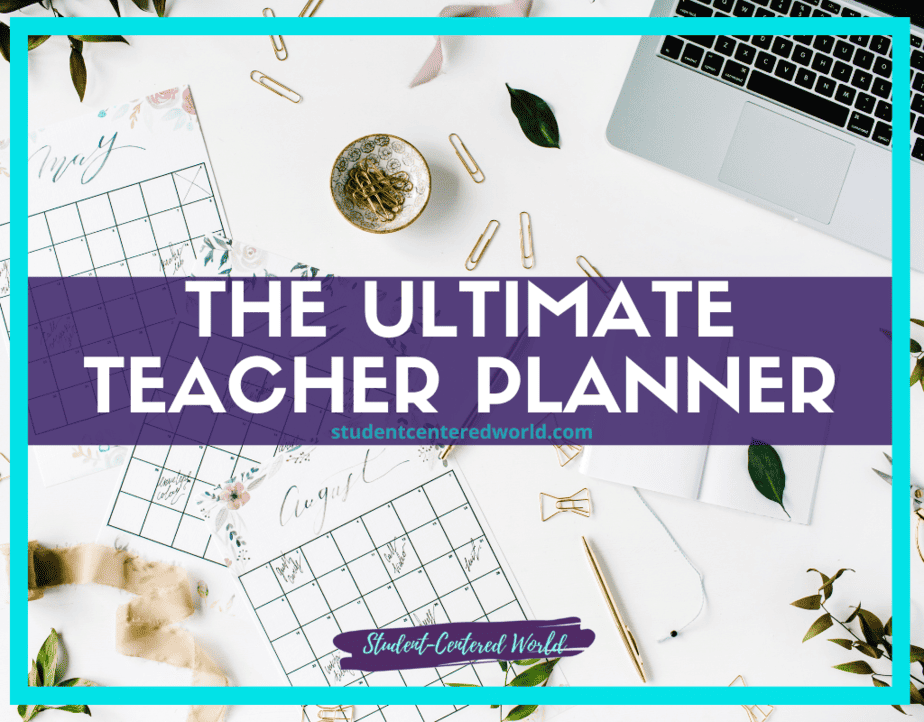Classroom Teacher Talk Examples: The Best Mental Boundaries
(This post may contain affiliate links that won’t change your price but will share some commission. As an Amazon Associate, I earn from qualifying purchases. Please read our disclosure policy for more information.)
How often have you been affected by a comment from a colleague, a parent online, or even a friend that challenged your teaching methods? It seems the art of friendly debate has been lost, replaced by a rigid, black-and-white mentality where every difference of opinion becomes a battle.
This constant external noise can make your internal dialogue question itself. But here’s the truth: if your decisions are made with your students’ best interests at heart, you are not wrong. While we must follow our school district policies and use common sense, your judgment in your own classroom is paramount.
Your decisions are right for your students. Silence external noise and trust your gut with these teacher talk examples.
The Shift in Society and School Culture
Somewhere along the way, our society decided that hiding behind a screen makes it acceptable to voice the meanest thoughts. This culture has seeped into our schools, affecting our mental health and professional collaborations.
The teachers’ room has long been a place to vent…a normal human need to share frustrations with those who understand. There’s nothing wrong with seeking support. The problem arises when that venting is met with negativity rather than constructive solutions, turning potential productive discussions into toxic sessions.

This negativity doesn’t just stay in the break room. It can come from administrators, parents, or even our own circles, causing us to doubt our abilities. In the current challenging climate of education, we need voices that lift us up, not add fuel to a negative fire.
The Power of Your Internal Dialogue and Classroom Practice
With so many external voices, it’s crucial to trust your gut. Your internal dialogue is built on your experience and knowledge of what works for your students. We must stop letting external forces trick us into thinking we are less than we are.
This self-trust is the foundation of effective teaching. Consider the research of John Hattie in Visible Learning, which emphasizes the importance of teachers reflecting on their impact. Your professional judgment is a key driver of student achievement.
Balancing Positivity and Realism: Avoiding Toxic Positivity
It’s important to distinguish between a positive mindset and “toxic positivity.” The latter ignores genuine struggle, suggesting we should only “look on the bright side.” This is not helpful.
True support acknowledges the “suck”…the tough classroom conversations, the students with language delays, the pressure of standardized tests, while still seeking silver linings. We can acknowledge that a lesson fell flat with one small group but sparked a good discussion in another. We can admit that our first attempt at using digital tools was rocky, while also celebrating the student voices we eventually heard.

Practical Strategies for Protecting Your Sanity and Your Practice
Since we can’t control others, we must focus on what we can control: ourselves.
- Audit Your Interactions: If a certain colleague consistently responds with negativity, politely limit your small group discussions with them. Protect your time and energy.
- Reframe Your Self-Talk: When you feel doubt, write down your internal dialogue. Acknowledge the challenge, but also list your successes. This helps organize your thoughts and prevents small issues from becoming overwhelming.
- Focus on Impactful Teacher Talk: Be intentional about your communication. Instead of falling into repetitive kinds of teacher-talk, focus on valuable teacher talk acts. Use talk moves to deepen classroom discourse. Increase wait time after asking questions to allow for more thoughtful responses from individual students. This shifts the balance from much teacher talk to increased student talk time, which is crucial for oral language development, especially for young children and second-language learners.
- Set Boundaries for Help: As a natural helper, I believe in supporting colleagues. However, if you find yourself spending much time with someone who dismisses every suggestion with “it won’t work,” it’s okay to step back. You cannot save everyone, and your well-being comes first.
Fostering Productive Classroom Conversations
This mindset of intentionality and self-trust extends directly to how we manage our classroom discourse, where the ultimate goal isn’t to eliminate teacher talk time but to make every minute of it purposeful and impactful. It begins with starting at the beginning of class with the right things, which means having a crystal-clear objective: is the primary aim to introduce new words through strategic direct instruction, or is it to facilitate a dynamic class discussion that allows students to explore a complex concept? This initial clarity dictates the subsequent kinds of teacher-talk employed.
Once the stage is set, the focus shifts to asking the right kinds of questions that truly stimulate cognitive engagement. This requires moving beyond simple factual questions that have one-word answers toward open-ended prompts that provoke good discussion and critical thinking. A crucial practice here is to consistently encourage students to articulate their thoughts in complete sentences, which reinforces their literacy skills and deepens their understanding.

Furthermore, to truly enrich classroom conversations, we must consciously work to embrace all student voices by cultivating a safe and supportive environment where wrong answers are not failures but valued as essential stepping stones to understanding.
Techniques like think-pair-share or structured small group discussions are invaluable here, as they provide a lower-stakes setting for young children, second-language learners, and those with language delays to build confidence and practice articulating their ideas before contributing to a whole-class share. This deliberate structuring of talk moves ensures that student talk time is maximized and that productive discussions become the norm, not the exception.
Finally, this entire process must be anchored by continuously checking for understanding through quick, short conversations or exit tickets at the end of a specific component of the lesson. This not only provides immediate, actionable feedback for the teacher but also powerfully empowers students in their own learning journey. This comprehensive approach to classroom discourse aligns with the findings of educational researchers like John Hattie, whose work on visible learning underscores that such reflective and responsive teaching practices have a significant positive effect on student achievement.
By mindfully balancing much teacher talk with ample opportunities for student talk time, and by strategically using digital tools to enhance these productive discussions, we transform our class time from a passive experience into an active dialogue. This is especially critical in a diverse country like the United States, where classrooms are microcosms of society, and these skills are the extra bones that strengthen the foundation of our students’ education. Integrating this focus on oral language development into our daily routines, from high school seminars to elementary classrooms, ensures that we are not just teaching content but are fostering the communicators and critical thinkers of tomorrow.
The Bottom Line
We are all in this together. Our shared goal is to help our students excel. By attacking each other, we do the opposite. It’s okay to be frustrated…that’s human nature. How you deal with it personally is what matters.
Let your inner voice stay positive. Remember, we’re all doing the best we can. There will always be people trying to drag others down, but we must ensure we are doing what is best for us. While our students’ well-being is our number one concern, we must also step back and take care of YOU.
This article was originally written on January 9, 2020




